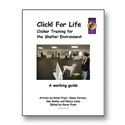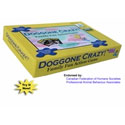Whether or not a family signs up for formal dog training, the dog still needs to wear equipment for identification and safety reasons. But not every sweater, collar, and leash is perfect for every pup; the choice depends on the dog's size, breed, and physical structure. The wrong item or poor-fitting equipment can actually cause structural injuries, as well as physical and behavioral irritation for the dog.
A proactive approach to selecting equipment is best for the dog, the family, and the veterinarian. Here are some tips for what families can do at home:
- Help your dog play "the equipment game" by spending a few minutes training every day. When it's time for the equipment to be placed on, the dog will be ready!
- Teach the dog to be calm in order to walk or step into the harness and/or to sit for the collar and leash to be placed. This behavior is preferable to the dog jumping or running away from you, of course! It also teaches the dog to enjoy the experience of sweaters and leashes being introduced and used.
- Arrange a meeting with your vet to help you assess the best humane equipment, for both behavioral and medical benefits.
- Work with a certified trainer who advocates for positive reinforcement training and who follows proactive steps for introducing equipment. The goal is to make even this learning process fun for the owner and dog.
- Train your dog to do some fun behaviors in between the introduction and fitting the equipment so that the dog does not become stressed. Try teaching your dog to spin, offer a paw, or sit, or make time for play with favorite toys.
KPA Training Tips of the Day are brought to you by Karen Pryor Academy Certified Training Partners. You can find more articles, ideas, and inspiration to help you train better and enjoy a lifelong bond with your dog on our website.







